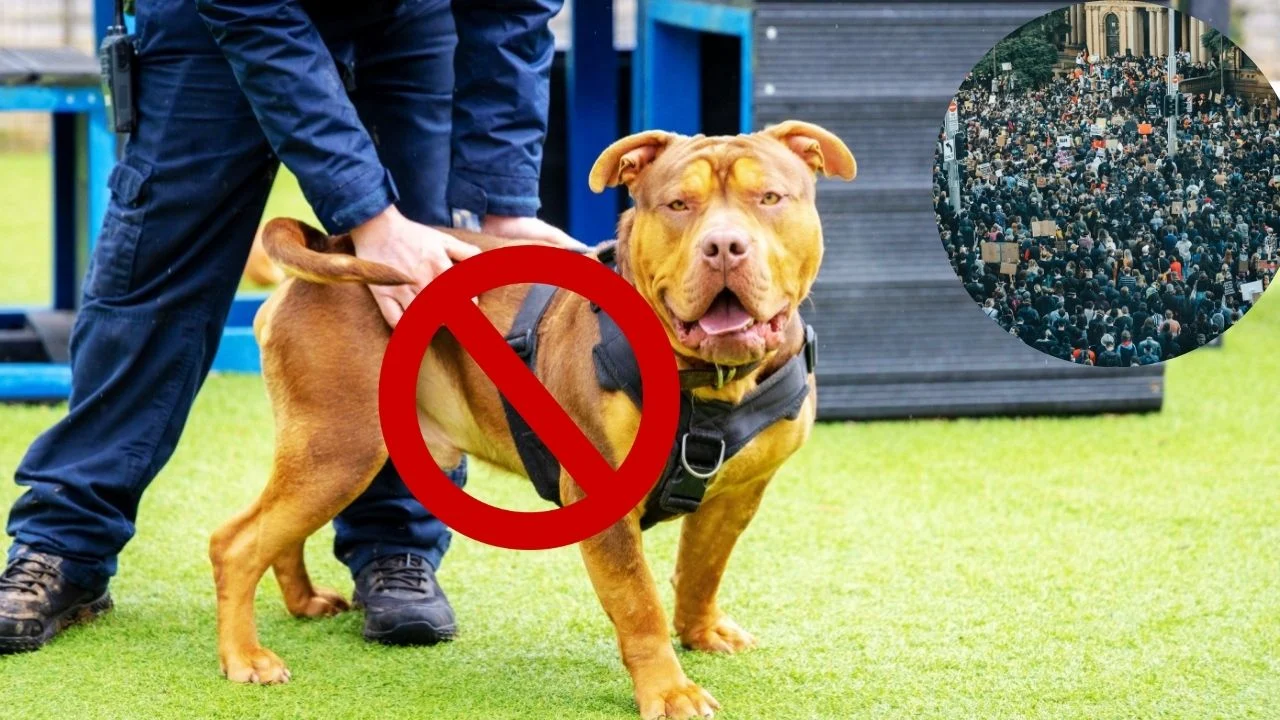Recent data reveals that XL bullies comprised nearly half of the dangerous or banned dogs that police forces in England and Wales seized and euthanized in 2024. According to a Freedom of Information request, law enforcement confiscated 3,464 suspected XL bullies last year, making up a significant portion of the 7,004 dogs identified as dangerous or prohibited under existing regulations. This XL Bully Seizures Surge has sparked further debate on breed-specific legislation and its effectiveness.
This rise in XL bully seizures has reignited the debate over breed-specific legislation and its effectiveness, with groups like the RSPCA questioning its approach to public safety.
Quick Navigation
Rising Concerns Over Breed-Specific Legislation
Reports from 33 police forces provided full euthanasia data, revealing that:
- Authorities euthanized 2,409 dogs classified as banned or dangerous in 2024.
- XL bullies accounted for 1,275 euthanized dogs (53% of the total).
- South Yorkshire Police led in confiscations, seizing 496 dogs.
- Greater Manchester Police recorded the highest euthanasia numbers, putting down 112 dogs.
The sharp increase in seizures follows legislative changes introduced at the end of 2023, which made it illegal to breed, exchange, or advertise XL bullies. By January 2024, owning one without an exemption certificate became a criminal offense under the Dangerous Dogs Act 1991.


Authorities can also seize and euthanize dogs deemed “dangerously out of control” under the same law.
However, critics argue that this approach disproportionately targets certain breeds rather than addressing the root causes of dangerous dog behavior.
Animal Welfare Groups Advocate for Alternative Approaches
Animal welfare organizations, including the RSPCA, have voiced concerns about breed-specific bans, arguing that these measures fail to reduce dog-related incidents effectively. The charity contends that many seized dogs are well-behaved family pets targeted solely based on appearance rather than behavior.
Proper training can make a significant difference, such as Steps to help your dog use a ramp, which can improve their mobility and overall behavior.
Key concerns raised by the RSPCA:
- Lack of scientific evidence linking XL bullies to greater aggression.
- The importance of responsible breeding, training, and education.
- Many banned dogs are beloved pets with no history of aggression.
- The need for stricter penalties on negligent owners rather than breed bans.
The RSPCA has long campaigned against breed-specific legislation, calling it ineffective and harmful to dogs that pose no real threat. They advocate for a broader approach to responsible dog ownership, including stricter penalties for negligent owners and better education on dog behavior.
Financial and Logistical Burden on Law Enforcement
With thousands of dogs being seized each year, police forces are struggling to find adequate kennel space to house them while legal proceedings unfold. This not only prolongs the time these dogs spend in confined conditions but also drives up operational costs for already stretched law enforcement budgets.
Financial impact of increased seizures:


- Kennel space shortages and veterinary expenses have soared.
- Costs rose from £4 million in 2018 to over £11 million between February and September 2024.
- Law enforcement agencies anticipate spending £25 million by April 2025, a 500% increase.
Officers and kennel staff also face the emotional toll of euthanizing large numbers of dogs, many of which may not have exhibited aggressive behavior.
Government Stands Firm on Public Safety Measures


Despite mounting opposition, the government maintains that the XL bully ban is necessary for public safety. A spokesperson reaffirmed the importance of responsible dog ownership across all breeds and indicated that further measures might be considered to ensure community protection.
Government stance and statistics:
- Over 57,000 XL bullies have been registered since the ban.
- Officials argue stronger regulations are necessary to prevent attacks.
- Calls for alternative solutions, such as mandatory training and stricter penalties, continue to grow.
However, many experts believe that focusing on breed bans rather than broader responsible ownership policies may be an ineffective strategy. As discussions continue, authorities must weigh the effectiveness of existing legislation against the rising concerns of dog welfare groups, pet owners, and law enforcement agencies alike.
The Ongoing Debate
As the debate continues, advocates and policymakers remain divided on the best approach to managing dangerous dogs—whether through strict breed-specific laws or by promoting responsible ownership and training initiatives.
The ongoing discussion underscores the complexity of balancing public safety with animal welfare. What remains clear is that the issue is far from settled, and the coming months may bring further calls for legislative review and potential reforms.

